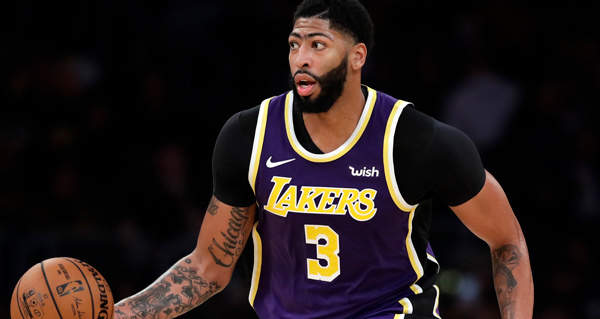The modern athlete doesn’t make much sense. Height, weight, speed, agility, and coordination all simultaneously maxed out, the steep demands of physics conquered almost completely, seven-footers who move end to end like guards did several decades ago. They roll off the assembly line better than ever, at a clip just incremental enough that our minds don’t boil in our skulls when we behold the newer models. There is Giannis Antetokounmpo the world-historic physical marvel, an interstate highway system of wrought-iron limbs screaming down the court, but also the fact that he’s been in our lives for seven years now, our familiarity with his bag of tricks, and that he was preceded by LeBron James and Kevin Durant. If you crossed those two in your imagination, you’d get somebody who looked a lot like Giannis, and well, here he is: somewhere in the middle of the register of the absurd.
You can’t get too hung up on this, not if you want to notice anything else about a basketball game. You look at the moon and feel overwhelmed. You look at the moon and don’t really see it. You’ve got other stuff going on. Each night an immortal bright yellow gray disc arcs across the sky. Your ideas about it change, depending on your mood, how much energy you have for awe. But it is always a bright disc. In the sky. Plato looked at it a few thousand times.
A certain morbid mind—okay, my mind—wonders how NBA players don’t get hurt more often. The sheer improbability of their bodies’ architecture, the violence of their movements, and what they’re up against suggest catastrophe. Ja Morant drives the lane with zero regard for his personal safety, Joel Embiid gets whaled on by his goliath peers all game. Injuries can and do happen, especially this past season, when seemingly every name you can think of has pulled or snapped something, but these guys hold up remarkably well for the most part. When we spot a gifted rookie, we believe we’re going to get to know him over the next 10 to 15 years, and we’re usually right. The sport isn’t littered with 24-year-old flameouts, familiar faces carrying a premature limp, five surgeries over six offseasons, his-body-really-let-him-down cases. Not as many as there could be, given the hits they take and awkward landings they bail into, the torque involved in each rapid change of direction.
Anthony Davis satisfies our morbidity. The man, built like an elegant heron, goes down twice per game as if he’s blown out every part of his lower half. He falls on top of somebody else’s sneaker and those pipe cleaner legs splay in any old direction. He’s on the floor for the next 90 seconds. This is not to call him soft but to say that he is extraordinarily prone to injuries that are thankfully much more minor than they initially look. Afflictions he can walk off. It is mostly the way that he tumbles to the floor when he turns his ankle. It has the aesthetics of a disaster, a fruit stand trundling across an intersection as the chase scene approaches. He’s tall and wiry; it’s a long journey from upright to prostrate no the hardwood. He clutches his calf and you think that’s a shame, that his season would end like—oh, okay, he’s fine. A false alarm that looks more or less exactly like the real thing.
We know what the real thing looks like because Davis does actually get hurt quite a bit. The Achilles tendinosis that forced him to miss half of this season is the most serious problem he’s ever had, but nagging issues plagued him during his time in New Orleans. His left shoulder gives him trouble most consistently but he has also—all in one breath—sprained his left ankle and left knee, fractured his left hand, dislocated his left index finger, had back spasms and a chest contusion, sprained his left toe, strained his groin and hip, sprained his left thumb, bruised his ribs and his tailbone. Most of this is day-to-day stuff. You skip a week-long road trip and come back for the home game. You play another week at 90 percent.
This doesn’t matter much in January, and it hardly mattered at all in New Orleans, on teams that weren’t headed anywhere. But for the first time, Anthony Davis tweaking something might have significant consequences. The Lakers showed over the second and third games of their series against the Suns that they have Phoenix under their thumb with LeBron and Davis at something close to their best, but in the second half of Game 4, they were the less talented team, blowing a sizeable lead and losing by eight following Davis’s exit with a groin pull. He’ll either play in a limited capacity in Game 5 or sit it out entirely, which puts Los Angeles perilously close to crashing out of the playoffs in the first round. They have one loss to play with, and that’s it. And even if they survive the Suns, they’re going to need a healthy Anthony Davis in later rounds.
This is searing analysis you can’t get anywhere else, to be sure, but the point is that a predicament like this has been in the cards ever since Davis moved from New Orleans to Los Angeles. We all saw what he can contribute to a title run last season. He can be dominant, brilliant, unstoppable, invaluable. But we have also seen him tumble over and over and over. He was bound to pick up one of his mild to moderate injuries at the wrong time, just by dint of cruel probability. Like their hobbled superstar, the Lakers might ultimately be okay, we’ll find out soon, but right now they’re on the floor clutching at who-knows-what, and it looks bad.



